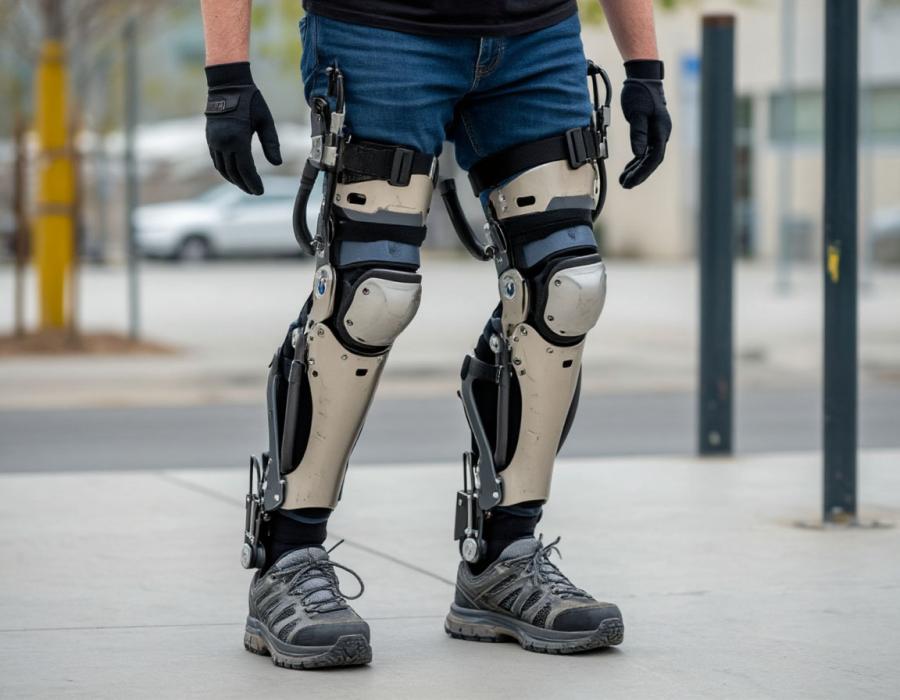Among the high-tech projects whose teams are trained within the framework of the MEPhI and Rosatom Technology Accelerator, there is also the ReFlex student project. Its initiators, MEPhI students, are developing a medical exoskeleton simulator for the rehabilitation of patients after lower limb injuries.

According to the project leader, Anton Moskalyuk, a 3rd-year student at the Institute of Physics and Technology of Intelligent Systems, the team's task is to create a prototype of a robotic exoskeleton that helps rehabilitate patients after lower limb injuries.
There are three planned stages of the project, during which more and more complex versions of the product will consistently appear.
The first stage is the "ReFlex mini", which provides for the presence of one motion sensor that connects to the phone and outputs real–time data on the level of muscle activity to the application.
The second stage of ReFlex.control is a system of several such sensors, to which gyroscopes and pressure sensors are added. All of them are connected to a common network and simultaneously collect information from different locations. This version is needed to assess axial loads during rehabilitation and sports, to prevent injury, and to predict certain pathologies, such as asymmetry of the lower extremities or saber-shaped deformity of the lower leg.
At the third stage, a system of electric motors operating in coordination with the sensor system is being implemented.
Why do we need such an exoskeleton?
After an injury to the lower extremities, such as ruptures of the joints or ligaments of the knee, fractures of the tibia or tibia, a person walks for some time in a cast or orthosis, does not move his leg, and during the healing period, his muscles and joints partially atrophy. They need to be developed, and the muscles need to regain the same strength they had before the injury. The
ReFlex exoskeleton will help the movement of the weakened leg through an electric motor system and adjust the recovery process, that is, make sure that the axial loads comply with the instructions of the attending physicians, so that the person does not step on the injured leg harder than necessary, and that he steps on the foot correctly.
Due to non-compliance with doctors' instructions, it often happens that six months or a year after rehabilitation, a person comes to the doctor again with new problems, for example, he has uneven legs, axial asymmetry, or the body is distorted when walking due to the fact that the patient is weaker on one leg. This is the problem that ReFlex is theoretically designed to solve. The exoskeleton equipped with sensors will provide feedback to both the patient and the doctor, so that the doctor can also detect the problem faster. Nowadays, asymmetries and problems of improper leg loads are often discovered at a late stage of rehabilitation, when it becomes noticeable to the naked eye that, say, one leg is 5 centimeters longer than the other.
When asked how many students are involved in the development of the exoskeleton, Anton Moskalyuk replied: "It's hard to say for sure. There are five people involved in the engineering part, three of whom study at MEPhI, besides me, these are Alexander Pozdeev and Oleg Aleshchenko. But we have a large community with several projects, we overlap, and people from different projects help each other."
The initiators of ReFlex are currently negotiating with the Department of Sports Rehabilitation and Rehabilitation at Sechenov University to obtain expert advisory support for the project from the point of view of medicine. The approvals of rehabilitation doctors from the MEDSI network of clinics and medical centers have also been obtained.
Previously, ReFlex initiators had already completed training at the Academy of Innovators, an accelerator created by the Moscow government.





